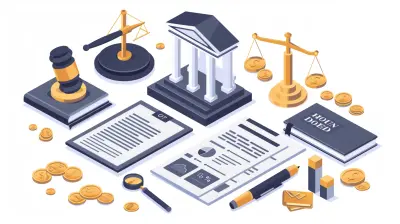The Power of Compounding in Your 401(k)
22 September 2025
Saving for retirement can feel like an overwhelming task. You put in a little money each paycheck, but it’s tough to see how those small contributions will turn into the comfortable nest egg you dream of. This is where the power of compounding comes in.
Compounding is often called the "eighth wonder of the world," and for a good reason. It allows your money to grow exponentially over time, which is why starting early and staying consistent with your 401(k) contributions can make a world of difference. In this article, we’ll dive into how compounding works, why it’s crucial for your 401(k), and how you can maximize its potential for a secure retirement. 
What Is Compounding?
At its core, compounding is the process of earning returns on both your original investment and the returns that investment generates over time. In simpler terms, it’s like a snowball rolling down a hill—your money grows not just from what you initially put in, but also from the additions it accumulates along the way.The longer your money stays invested, the more time it has to grow. And the best part? You don’t have to do anything extra—just let time and the market do their magic. 
How Compounding Works in a 401(k)
A 401(k) is a retirement savings plan with tax advantages, often offered by employers. One of its greatest benefits is that your contributions are typically invested in a mix of stocks, bonds, and other assets, allowing you to take full advantage of compounding.Here’s a simple breakdown of how it works:
1. You contribute money to your 401(k) every paycheck.
2. Your employer may match your contributions (which is essentially free money!).
3. Your investments generate returns (dividends, interest, or capital gains).
4. Those returns are reinvested, and they start earning their own returns.
This cycle repeats year after year, and the earlier you start, the more time your money has to grow. 
The Magic of Time – Why Starting Early Matters
Let’s put compounding into perspective with a simple example.Imagine Alice and Bob both save for retirement, but they start at different ages:
- Alice starts at 25, contributing $300 a month until she turns 65.
- Bob waits until he's 35, contributing the same $300 per month until 65.
Assuming an 8% annual return, here’s what happens:
- Alice ends up with around $1.2 million at retirement.
- Bob ends up with only about $550,000—less than half of Alice’s total!
Even though Bob contributed for 30 years, compared to Alice’s 40 years, his delay cost him hundreds of thousands of dollars. That’s the magic of time and compounding at work. 
Employer Matching – Don't Leave Free Money on the Table
If your employer offers 401(k) matching contributions, you should take full advantage of it.Let’s say your employer offers a 100% match on the first 5% of your salary. If you earn $60,000 per year and contribute 5% ($3,000), your employer also puts in $3,000. That’s an instant 100% return on your investment—even before compounding kicks in!
Not taking full advantage of employer matching is like turning down free money that could be working for your retirement.
The Role of Investment Growth in Compounding
Your 401(k) investments typically include stocks, bonds, and mutual funds, which grow at different rates. While past performance doesn’t guarantee future results, the stock market has historically returned 7-10% per year on average.Higher returns mean faster compounding. Investing in a diversified mix of assets that aligns with your risk tolerance can help you maximize your long-term growth.
The effect of higher vs. lower returns:
| Annual Return (%) | 30-Year Growth of $100,000 ||------------------|--------------------------|
| 4% | $324,000 |
| 6% | $574,000 |
| 8% | $1.01 million |
Even a small percentage difference in returns can have a huge impact over time.
How to Maximize Compounding in Your 401(k)
1. Start as Early as Possible
Even if you can’t contribute a lot, starting young allows your money to work longer, making a massive difference over time.2. Contribute Consistently
Make regular contributions, even during rough economic times. Market downturns are temporary, but your long-term gains from staying invested can be substantial.3. Take Full Advantage of Employer Matching
If your employer offers a match, contribute at least enough to get the full match—it’s free money that can supercharge your savings.4. Increase Contributions Over Time
Every time you get a raise, consider increasing your 401(k) percentage. Even a small increase (like 1%) can significantly boost your retirement savings.5. Choose Investments That Align With Long-Term Growth
Investing in a diverse mix of stocks, bonds, and mutual funds helps you balance risk while maximizing your returns and compounding potential.6. Minimize Fees
High fees can eat into your savings over time. Compare expense ratios and opt for low-cost funds to keep more of your earnings.The Cost of Waiting – Don’t Procrastinate!
Many people delay contributing to their 401(k) because they think they can "catch up later". But the truth is, waiting even a few years can cost you thousands.Let’s break it down:
- If you start at 25 and contribute $500/month, you could retire with $1.7 million (assuming an 8% return).
- If you wait until 35, that total shrinks to $820,000.
- If you wait until 45, it drops even further to $360,000.
The sooner you start, the easier it is to build wealth over time.
Final Thoughts
Understanding the power of compounding in your 401(k) is crucial for building a comfortable retirement. The earlier you start, the better your results. Even small contributions, when combined with time and employer matching, can lead to massive wealth growth over decades.So, don’t wait—start prioritizing your 401(k) today! Your future self will thank you.
all images in this post were generated using AI tools
Category:
401k PlansAuthor:

Yasmin McGee
Discussion
rate this article
1 comments
Edith Clarke
Compounding makes your 401(k) truly grow!
October 10, 2025 at 2:25 AM

Yasmin McGee
Absolutely! Compounding is key to maximizing your 401(k) growth over time, allowing your investments to earn returns on both the principal and accumulated interest.


